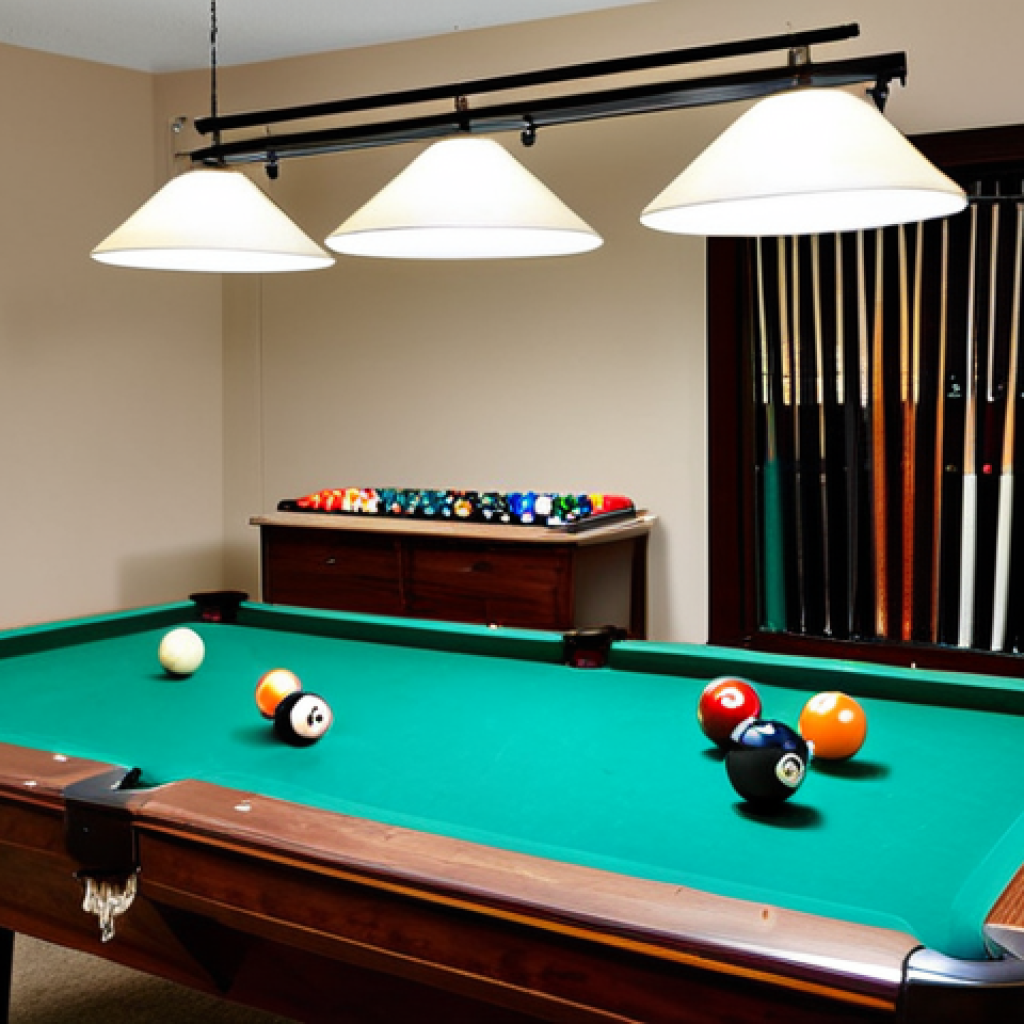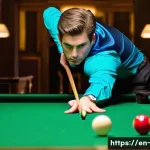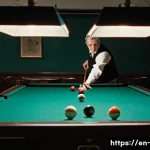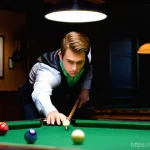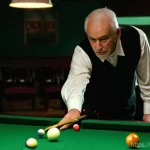Okay, here’s a blog-style introduction to the topic of personal billiards practice setups, keeping all your instructions in mind:Ever get that itch to perfect your pool game, but find it tough to get consistent practice time at your local billiards hall?
I know I have! Between waiting for tables and dealing with distractions, it’s a real challenge to focus on improving specific skills. Lately, I’ve been diving into the world of personal billiards practice setups – everything from dedicated home rooms to clever space-saving solutions.
The future of billiards practice is looking bright, with technology like augmented reality potentially offering personalized coaching and performance tracking.
It’s a game changer! Let’s delve into the details in the article below.
## Crafting Your Ideal Billiards Sanctuary: Space, Budget, and AmbitionLet’s be honest, the dream is a dedicated, soundproofed room with custom lighting and climate control.
But reality often involves compromises. When I first started thinking about this, I was picturing a full-blown renovation. I quickly realized my wallet had other plans!
The key is honestly assessing your available space and budget. Are you talking about squeezing a table into a spare bedroom, converting the garage, or building an addition?
Each scenario dramatically affects cost and complexity. Think about the room’s dimensions – you’ll need ample space around the table for comfortable cueing.
I made the mistake of underestimating this initially and ended up bumping my cue against the wall more than once!
Maximizing a Small Space: Clever Solutions
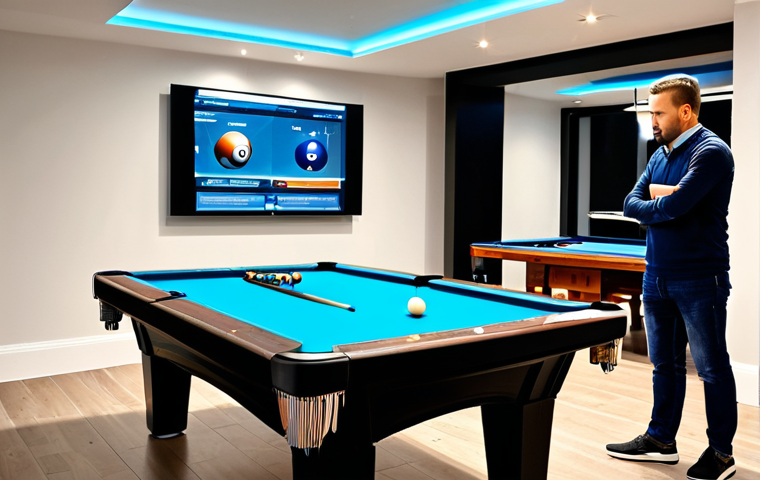
* Folding Tables: I’ve seen some surprisingly decent folding tables that are perfect for those with limited space. They’re not ideal for serious practice, but they’re better than nothing!
* Multi-Purpose Rooms: Can you adapt a room that already serves another function? Perhaps the dining room can become a billiards room after dinner. * Wall-Mounted Cue Racks: Don’t let your cues take up valuable floor space.
Budget-Friendly Options: Making the Most of What You Have
* Used Tables: Scouring online marketplaces and local classifieds can yield some fantastic deals on used tables. Just be sure to inspect it thoroughly for any damage.
* DIY Lighting: Forget expensive professional lighting. A few strategically placed clamp lights can make a world of difference. * Repurpose Existing Furniture: Use an old dresser as a storage unit for balls, chalk, and other accessories.
The Importance of a High-Quality Table: Investment vs. Expense
Okay, this is where you really don’t want to skimp. The table is the heart and soul of your practice setup. A cheap, poorly constructed table will only frustrate you and hinder your progress.
I learned this the hard way when I bought a bargain-basement table that had uneven rails and a warped playing surface. It was a nightmare! A high-quality table, on the other hand, is an investment that will pay off in the long run.
Think about the slate thickness, the quality of the cloth, and the sturdiness of the frame.
Slate Thickness: A Key Indicator of Quality
* Thicker slate (typically 1 inch or more) provides a more stable and consistent playing surface. * Thinner slate is more prone to warping and can affect ball roll.
Cloth Quality: Smooth and Durable
* Look for cloth made from high-quality wool or a wool-nylon blend. * A smoother cloth allows for faster and more accurate ball speeds.
Frame Construction: Stability is Key
* A sturdy frame is essential for maintaining a level playing surface. * Look for a frame made from solid wood or metal.
Lighting the Way to Success: Eliminating Shadows and Glare
Proper lighting is crucial for a good billiards setup. You need to be able to see the balls clearly without any distracting shadows or glare. I’ve experimented with all sorts of lighting configurations, and I’ve found that a combination of overhead lighting and task lighting works best.
Overhead lighting provides general illumination, while task lighting focuses on specific areas of the table.
Overhead Lighting: Consistent Illumination
* Use multiple lights to distribute the light evenly across the table. * Consider using LED lights for energy efficiency and longevity.
Task Lighting: Focusing on Key Areas
* Position task lights to eliminate shadows and highlight specific balls. * Adjustable lights allow you to customize the lighting to your preferences.
Essential Accessories: More Than Just Cues and Balls
While a good cue and a set of balls are obviously essential, there are a few other accessories that can greatly enhance your practice experience. I’m talking about things like a cue rack, a ball polisher, and a training aid or two.
These may seem like minor details, but they can make a big difference in your overall enjoyment and progress.
Cue Maintenance: Keeping Your Cue in Top Condition
* A cue rack is essential for storing your cues safely and preventing them from warping. * Regularly clean and polish your cue to maintain its performance.
Ball Cleaning: Ensuring Smooth Ball Roll
* A ball polisher will keep your balls clean and free of dirt and debris. * Clean balls roll smoother and more predictably.
Creating a Practice Routine: Structure and Focus
Having a great setup is only half the battle. You also need a structured practice routine to maximize your progress. I’ve found that it’s helpful to set specific goals for each practice session and to track my progress over time.
Whether it’s improving your position play, mastering a specific shot, or increasing your consistency, having a plan will help you stay focused and motivated.
Setting Goals: What Do You Want to Achieve?
* Be specific: “I want to improve my break shot accuracy” is better than “I want to get better at pool.”
* Make it measurable: “I want to consistently pocket at least one ball on the break” allows you to track your progress.
Tracking Progress: Measuring Your Improvement
* Keep a practice journal: Note what you worked on, how it felt, and what you need to improve. * Use a training aid: There are apps available that track your progress and provide feedback.
Minimizing Distractions: Creating a Focus Zone
One of the biggest advantages of having your own practice setup is the ability to control your environment and minimize distractions. I’ve found that it’s essential to create a space that is free from interruptions and conducive to focus.
Turn off your phone, put on some calming music, and let your family or roommates know that you need some uninterrupted time.
Cell Phone
* Put on silent
* Put in another room
Music
* Calming sounds
* Upbeat motivation
* Silence
Augmented Reality: The Future of Billiards Practice?
I’m always excited about new technologies that can help me improve my game, and augmented reality (AR) has me particularly intrigued. Imagine being able to use your phone or tablet to overlay virtual guides onto the table, showing you the optimal shot trajectory, ball placement, and even potential spin effects.
It’s like having a personal coach right there with you! While AR billiards apps are still in their early stages, I believe they have the potential to revolutionize the way we practice and learn the game.
I’m so excited that this is going to be a thing of the future and billiards will be getting more love because of it!
| Factor | Importance | Considerations |
|---|---|---|
| Space | High | Measure your available space carefully. Consider folding tables or multi-purpose rooms if space is limited. |
| Budget | High | Set a realistic budget and stick to it. Explore used tables and DIY lighting options to save money. |
| Table Quality | High | Invest in a high-quality table with thick slate, durable cloth, and a sturdy frame. |
| Lighting | Medium | Use a combination of overhead and task lighting to eliminate shadows and glare. |
| Accessories | Medium | Invest in essential accessories like a cue rack, ball polisher, and training aids. |
| Practice Routine | High | Develop a structured practice routine with specific goals and track your progress over time. |
| Distraction Control | Medium | Minimize distractions by creating a focus zone and limiting interruptions. |
Crafting the perfect billiards practice haven is a journey, a blend of aspiration and practical consideration. It’s about creating a space that fuels your passion and elevates your game, regardless of whether you’re working with a sprawling basement or a cozy corner.
Remember, the most important element is your dedication to improvement and enjoyment of the game!
Wrapping Up
So, there you have it! Setting up your personal billiards practice space is an investment in your passion. It’s not just about the equipment; it’s about creating an environment where you can focus, learn, and enjoy the game we all love. Remember to balance your dreams with your budget and always prioritize quality where it matters most. Now, go chalk up and start practicing!
Handy Tips to Elevate Your Game
1. Online Communities: Join billiards forums or social media groups. Sharing tips and experiences with other players can provide valuable insights and motivation.
2. Professional Lessons: Even a few sessions with a qualified instructor can significantly improve your technique and understanding of the game.
3. Practice Drills: Focus on specific drills to address your weaknesses and improve your consistency. There are numerous resources online and in books that offer a variety of drills.
4. Record Your Sessions: Use your phone or a camera to record your practice sessions. Reviewing your footage can help you identify areas for improvement and track your progress.
5. Mental Game: Billiards is as much a mental game as it is a physical one. Practice staying calm and focused under pressure, and visualize your shots before you take them.
Key Takeaways
* Prioritize Table Quality: Don’t skimp on the table. It’s the foundation of your practice setup.
* Optimize Lighting: Good lighting is essential for clear visibility and preventing eye strain.
* Create a Distraction-Free Zone: Minimize interruptions to maximize your focus and concentration.
* Develop a Structured Practice Routine: Set specific goals and track your progress over time.
* Embrace Technology: Explore augmented reality and other technological advancements to enhance your practice.
Frequently Asked Questions (FAQ) 📖
Q: I’m tight on space. What’s the smallest area I could realistically set up a practice billiards area in?
A: Honestly, you can get away with a surprisingly small space if you’re creative. I’ve seen some folks squeeze a 7-foot table into a converted garage corner or even a large spare bedroom.
The key is to factor in enough cueing space around the table – you’ll want at least 4-5 feet of clearance on all sides to avoid constantly bumping into walls.
A smaller table is a must, of course!
Q: What kind of equipment is absolutely essential for a home practice setup, besides the table itself?
A: Besides the obvious (cues, balls, and chalk!), I’d say good lighting is non-negotiable. You need a bright, even light source directly over the table to avoid shadows and ensure accurate aiming.
Also, invest in a decent ball cleaner and table brush to keep everything in tip-top shape. Finally, a practice aid like a ghost ball or aiming trainer can really help focus your drills.
Q: What are some good drills I can do by myself to improve my game at home? I usually only play with friends.
A: Solo practice is all about repetition and focus. I personally love doing straight rail drills – just running the cue ball back and forth along the rail to improve my stroke consistency.
Also, try setting up pattern drills where you have to pocket a series of balls in a specific order. Another favorite of mine is practicing position play by leaving myself progressively more difficult shots after each pocketed ball.
The internet is full of solo billiards drills, so do some searching and find what works best for you.
📚 References
Wikipedia Encyclopedia
